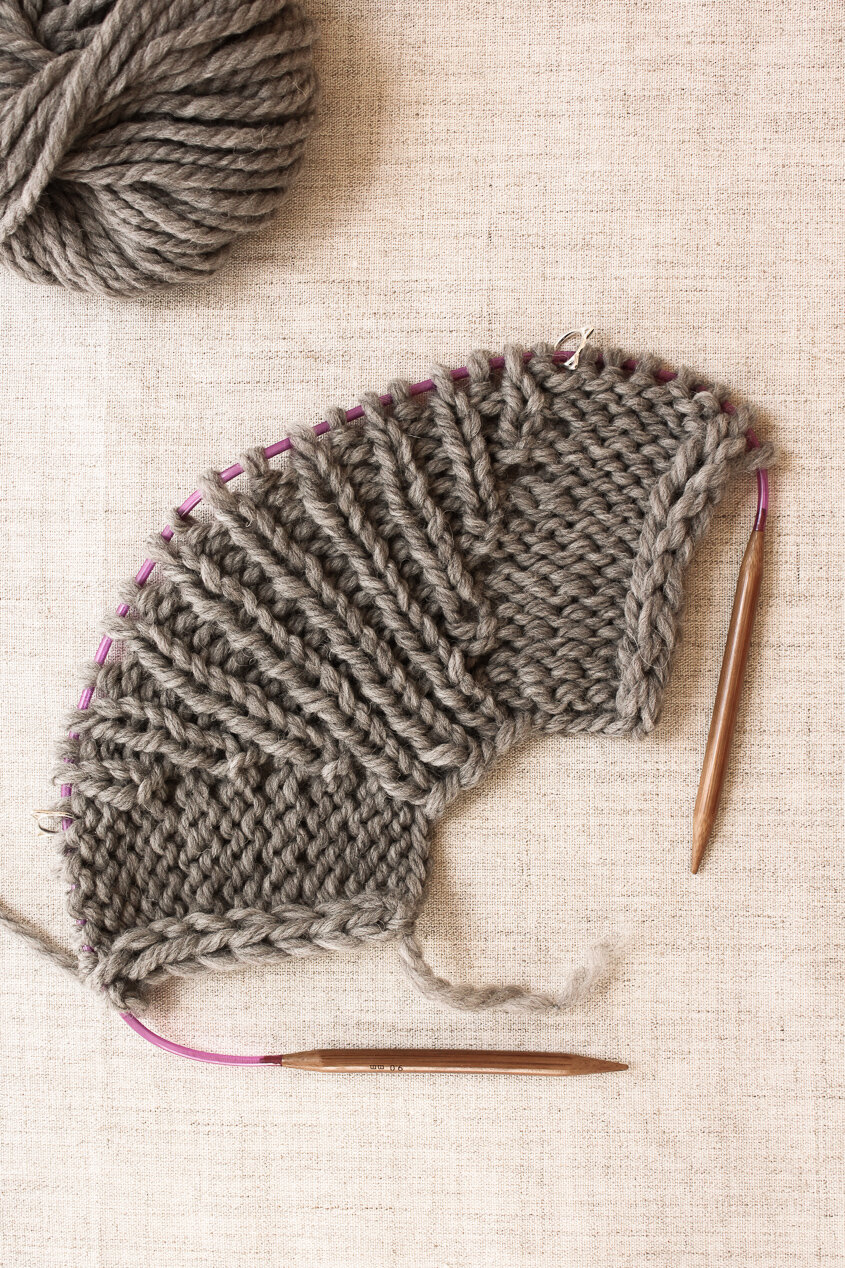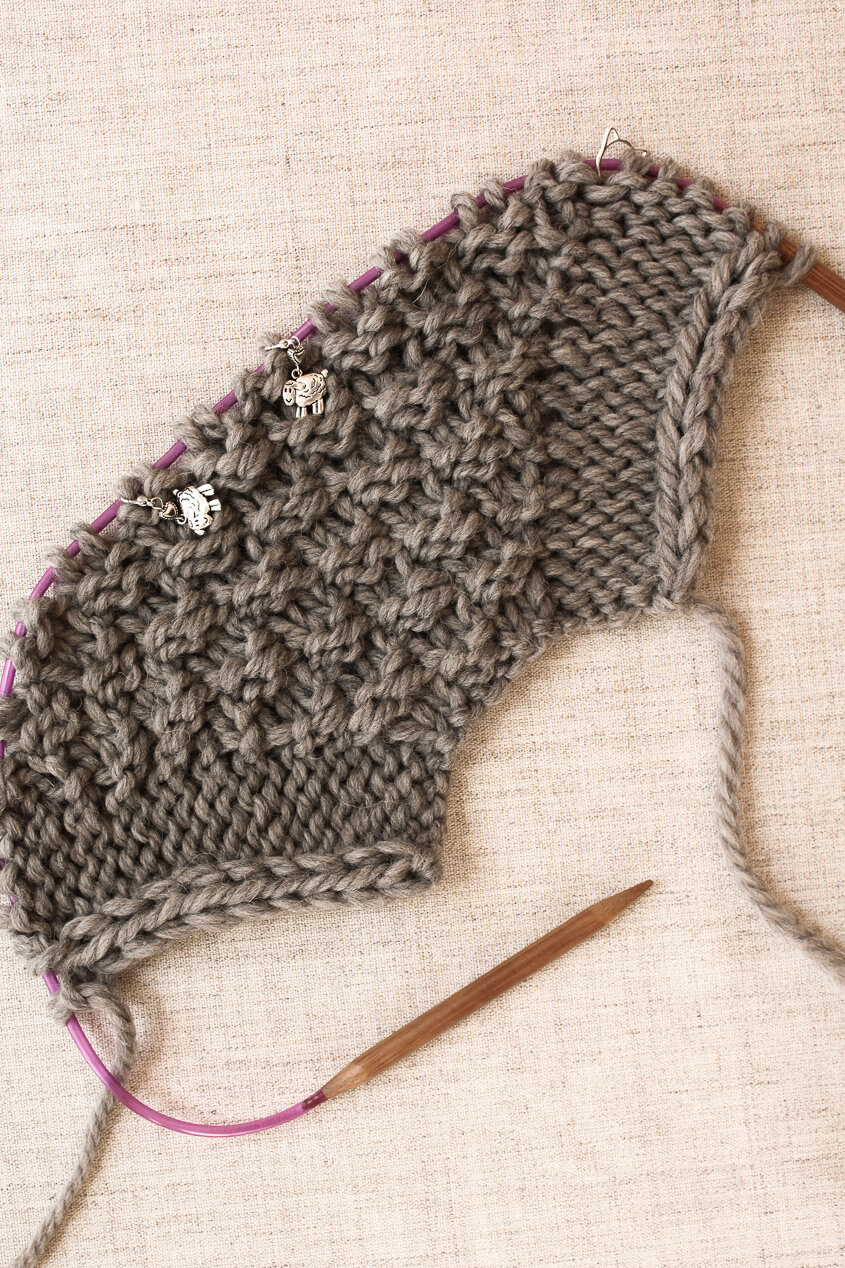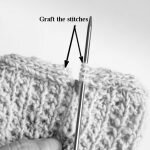How to Incorporate Increased Stitches into the Established Pattern
 In my latest pattern that is being tested right now, you will find the instructions that look something like that "work even, incorporating the increased sts into est pattern". Though I try to write my patterns as detailed as possible and in this particular pattern I walk the knitter through the first rows/rounds with step by step instructions on how to work the increased stitches into the pattern, it is impossible to write up every single row of the sweater, just because it would end up way too big and messy. So, such instructions as "work as est" come in handy and they are pretty self explanatory.But what if you are a new knitter and this whole concept of "as established" is scary for you? In this tutorial I will try to explain to you the basics of how to increase stitches and keep the pattern sequence intact.Before I begin here is the list of abbreviations used:M1R - make one right increase.M1L - make one left increase.inc/inc-s/inc-d - increase/increases/increasedst/sts - stitch/stitches
In my latest pattern that is being tested right now, you will find the instructions that look something like that "work even, incorporating the increased sts into est pattern". Though I try to write my patterns as detailed as possible and in this particular pattern I walk the knitter through the first rows/rounds with step by step instructions on how to work the increased stitches into the pattern, it is impossible to write up every single row of the sweater, just because it would end up way too big and messy. So, such instructions as "work as est" come in handy and they are pretty self explanatory.But what if you are a new knitter and this whole concept of "as established" is scary for you? In this tutorial I will try to explain to you the basics of how to increase stitches and keep the pattern sequence intact.Before I begin here is the list of abbreviations used:M1R - make one right increase.M1L - make one left increase.inc/inc-s/inc-d - increase/increases/increasedst/sts - stitch/stitches
How to Incorporate Increased Stitches into the Established Pattern
1x1 rib
To enlarge the photo, click on it.
[gallery columns="2" link="file" size="large" ids="7536,7537,7538,7539,7540,7541"]As you can see, incorporating increased stitches into binary stitch patterns (2 st repeat patterns) is very easy - all you have to do is to look at one stitch before or after it for the clue what you are supposed to work to keep the pattern intact.But what if there are more stitches in one repeat, especially this is the case for lace shawls. I remember knitting my first lace shawl from Vogue Knitting issue and was quiet lost at first when the pattern asked to incorporate the increased stitches into a complicated lace pattern. When this happens and you don't have a chance to write to designer to ask for help, the best way to go is to understand the stitch pattern sequence and the logic behind it.For demonstrations, let's take Double Moss stitch pattern that has 4 st repeat + 2 sts for symmetry and 4 rows repeat:Row 1 (RS): * K2, P2 *, K2Row 2 (WS): P2, * K2, P2 *Row 3: * P2, K2 *, P2Row 4: K2, * P2, K2 * This pattern is more tricky not only because it has more stitches in one repeat, but also because it has more rows in one full pattern repeat. Let's tale a look on how you can handle it.
This pattern is more tricky not only because it has more stitches in one repeat, but also because it has more rows in one full pattern repeat. Let's tale a look on how you can handle it.
How to Incorporate Increased Stitches into the Established Pattern
Double Moss
To enlarge the photo, click on it.
[gallery columns="2" link="file" size="large" ids="7546,7547,7548,7549"]After some practice, you will start "feeling" the stitch pattern and understand the logic of it much better, so the whole process of incorporating increased stitches would be quiet automatic and you won't have to analyze it that much. This is the beauty of knitting - with some time and patience, you can easily master any aspect of it!
I hope you will find this tutorial helpful in your future projects.
RELATED POSTS


